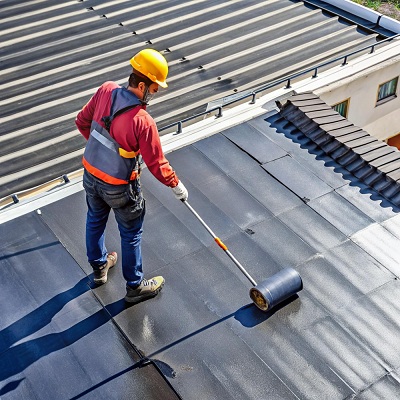Maintaining your roof is one of the most essential tasks in protecting your home from the elements, avoiding costly repairs, and extending the life of your roofing system. A well-maintained roof acts as a first line of defense against various weather conditions, from rain and snow to extreme heat and cold. With that in mind, we’ve prepared a comprehensive roof maintenance checklist to ensure your roof stays in top shape all year round.
1. Regular Roof Inspections
One of the most important aspects of roof maintenance is conducting regular inspections. We recommend inspecting your roof twice a year, preferably in spring and fall. During these inspections, you should be looking for signs of wear and tear, as well as any damage that may have occurred over the previous months. Common issues to look for include:
- Missing or damaged shingles
- Cracked or worn sealant
- Sagging or uneven areas
- Moss, algae, or lichen growth
- Debris accumulation in gutters and valleys
Regular inspections allow you to catch problems early, potentially saving you thousands of dollars in repairs.
2. Keep Gutters Clean
Gutters play a crucial role in directing water away from your roof and foundation. Clogged gutters can lead to water backup, causing damage to both your roof and your home’s structure. To prevent these issues, it’s essential to:
- Clean gutters at least twice a year, removing leaves, twigs, and other debris.
- Check for gutter damage, such as cracks or holes, that could lead to leaks.
- Ensure downspouts are clear, allowing water to flow freely away from your home.
A simple cleaning and maintenance routine for your gutters can prevent major water damage and prolong the lifespan of your roof.
3. Trim Overhanging Trees
Trees that overhang your roof can cause significant damage if not properly managed. Falling branches and leaves can accumulate on your roof, leading to moisture retention and eventual deterioration of roofing materials. Additionally, overhanging branches provide a pathway for pests to access your roof. To prevent this:
- Trim back branches that hang over your roof, ensuring they are at least six feet away from the surface.
- Remove any debris, such as leaves and twigs, from the roof and gutters after storms or high winds.
- Regularly inspect nearby trees for signs of rot or disease that could lead to branch breakage.
By keeping your roof free from debris and minimizing the risk of branch damage, you’ll protect your roof from unnecessary wear and tear.
4. Check for Water Leaks and Stains
Water leaks are a common problem that can cause significant damage if left unchecked. During your roof inspection, be sure to check for any signs of water intrusion, both inside and outside your home. Key areas to inspect include:
- Ceilings and walls for water stains, discoloration, or peeling paint.
- Attic spaces for signs of moisture, such as damp insulation or mold growth.
- Roof flashing around chimneys, vents, and skylights to ensure a tight seal.
If you notice any signs of a leak, it’s crucial to address the issue immediately to prevent further damage. In many cases, a simple repair or sealant application can stop the leak before it worsens.
5. Repair or Replace Damaged Shingles
Shingles are your roof’s primary defense against the elements, and damaged or missing shingles can lead to leaks and further deterioration. During your roof inspection, take note of any shingles that are:
- Cracked, curled, or blistered
- Missing or loose
- Discolored or showing signs of granule loss
If you spot any of these issues, it’s important to repair or replace the damaged shingles promptly. Ignoring shingle damage can lead to more extensive roof repairs or even the need for a full roof replacement.
6. Maintain Roof Flashing
Roof flashing is a thin material used to direct water away from critical areas of the roof, such as chimneys, vents, and skylights. Over time, flashing can become loose, cracked, or damaged, leading to leaks and water damage. As part of your roof maintenance routine, you should:
- Inspect flashing for signs of wear, corrosion, or detachment.
- Re-seal or replace flashing if it is damaged or no longer providing a proper seal.
- Pay special attention to areas where the roof meets vertical surfaces, as these are common spots for water infiltration.
Proper flashing maintenance ensures that water is effectively diverted away from vulnerable areas, protecting your roof and home from leaks.
7. Address Ice Dams in Winter
In colder climates, ice dams can form on the edges of your roof, preventing melting snow from draining properly. This trapped water can seep under shingles, leading to leaks and water damage. To prevent ice dams, you can:
- Ensure your attic is properly insulated, as heat escaping from the home can cause snow to melt unevenly and refreeze at the roof’s edge.
- Install roof and gutter heating cables, which help prevent ice buildup during the winter months.
- Clear snow from your roof using a roof rake after heavy snowfalls, reducing the likelihood of ice dams forming.
Taking steps to prevent ice dams can save you from costly repairs due to water damage and protect your roof’s integrity during the winter season.
8. Ensure Proper Attic Ventilation
Proper attic ventilation plays a significant role in maintaining the health of your roof. Without adequate ventilation, heat and moisture can become trapped in your attic, leading to:
- Increased energy costs due to poor temperature regulation.
- Warping and cracking of roofing materials.
- The growth of mold and mildew, which can compromise the structural integrity of your home.
To ensure proper attic ventilation, check that your attic has sufficient intake and exhaust vents, allowing air to circulate freely. If you’re unsure, consult with a roofing professional to assess your attic’s ventilation needs.
9. Prevent Moss and Algae Growth
Moss and algae growth can cause significant damage to your roof if not addressed promptly. Moss retains moisture, which can weaken shingles and lead to rot, while algae can discolor your roof and reduce its overall lifespan. To prevent moss and algae growth:
- Install zinc or copper strips along the ridge of your roof, which release algae-killing particles when it rains.
- Trim back overhanging trees, as shaded areas are more prone to moss and algae growth.
- Clean your roof regularly using a gentle cleaner and a soft brush to remove moss and algae without damaging your shingles.
By keeping your roof clean and preventing the growth of moss and algae, you can extend the life of your roofing system and maintain its appearance.
10. Schedule Professional Roof Maintenance
While regular inspections and minor repairs can be handled by most homeowners, it’s also important to schedule professional roof maintenance at least once a year. A roofing professional can:
- Conduct a thorough inspection, identifying potential issues that may not be visible from the ground.
- Provide expert repairs, ensuring that your roof remains in top condition.
- Offer guidance on long-term maintenance, helping you make informed decisions about your roof’s care.
Regular professional maintenance ensures that your roof remains in excellent condition, preventing costly repairs and extending its lifespan.



